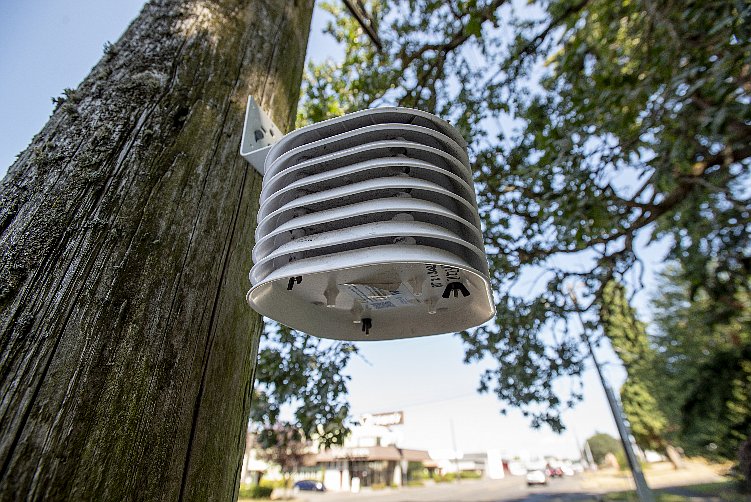Tree Coverage in Cities Crucial, WA Research Shows
March 1, 2024 at 2:05 p.m.
As part of the Greening Research in Tacoma initiative, air temperature monitors were set up in a city neighborhood. Hannah Letinich/The Nature Conservancy)
...by Eric Tegethoff, Washington News Service
The Greening Research in Tacoma initiative measured air temperatures across a neighborhood in the city to understand the effects of urban trees.
Ailene Ettinger, qualitative ecologist for The Nature Conservancy in Washington and the study's lead author, said temperatures were as much as 18 degrees lower in areas with trees. Ettinger noted trees are essential to mitigate the effects of climate change.
"They reduce the probability of extreme heat occurring," Ettinger explained. "The kind of heat that can be harmful for human health, and can also just reduce the ability of people to do their work if they're working outside."
The Greening Research in Tacoma initiative is a partnership of The Nature Conservancy in Washington, University of Washington, Tacoma Tree Foundation and Tacoma Urban Forestry program. The study was published in the journal Scientific Reports.
Lowell Wyse, executive director of the Tacoma Tree Foundation, said urban trees are also an environmental justice issue. He pointed out the South Tacoma neighborhood where the study took place has half the canopy coverage of the rest of the city, and is also more racially and ethnically diverse.
"There's a growing awareness that the way the city's designed isn't fair for everybody," Wyse observed. "People that live in this neighborhood really care about making a change on all those fronts - environmental, social and economic."
Wyse added the work has gained greater urgency since the 2021 heat wave in the Northwest, which killed eight people in Tacoma, including one in the neighborhood studied.
"It's kind of becoming a life-and-death issue here to understand the urban heat-island effect, and start making investments in shade and cooling resources in these neighborhoods that are suffering the most from those kinds of events," Wyse stressed.





